Unix History
Diagram
You can download a little diagram of Unix history in PostScript A4 [ http://perso.wanadoo.fr/levenez/unix/unix_a4.ps
] or in PDF A4 [ http://perso.wanadoo.fr/levenez/unix/unix_a4.pdf ]. If you prefer,
you can use the PostScript Letter [ http://perso.wanadoo.fr/levenez/unix/unix_letter.ps
] format or the PDF Letter [ http://perso.wanadoo.fr/levenez/unix/unix_letter.pdf
] format.
If you have a plotter you can use this EPS [ http://perso.wanadoo.fr/levenez/unix/unix.eps
]  file, and if you have some
problem with it, look here [ http://perso.wanadoo.fr/levenez/eps2ps.html ].
file, and if you have some
problem with it, look here [ http://perso.wanadoo.fr/levenez/eps2ps.html ].
Below, you can see the preview :
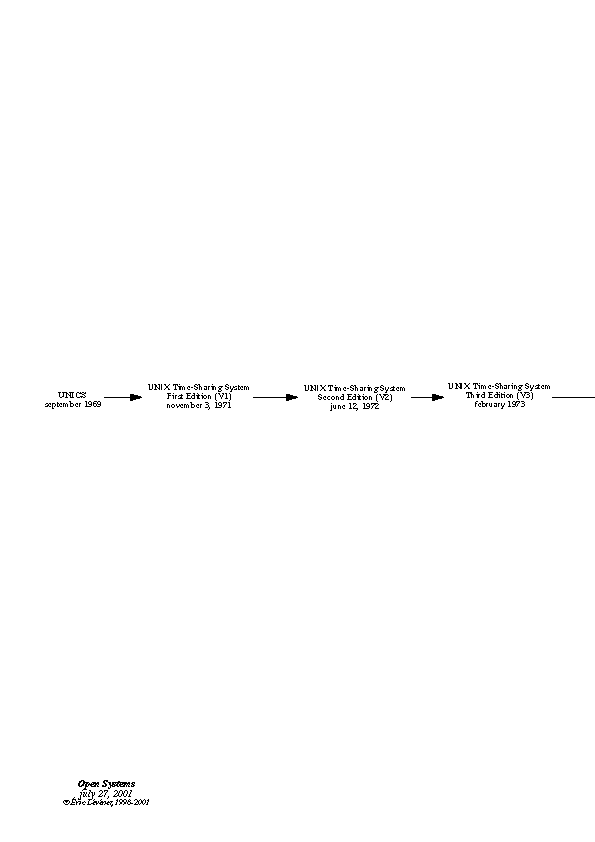 |
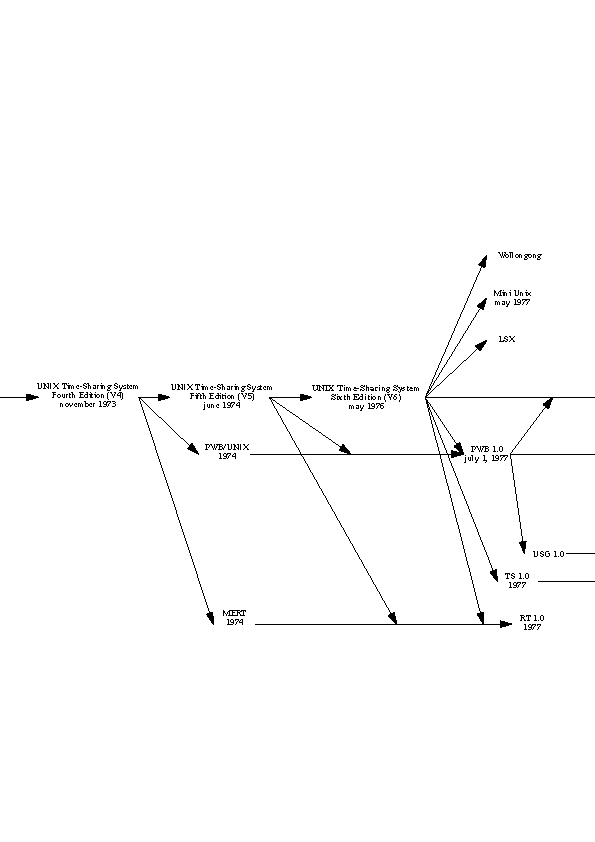 |
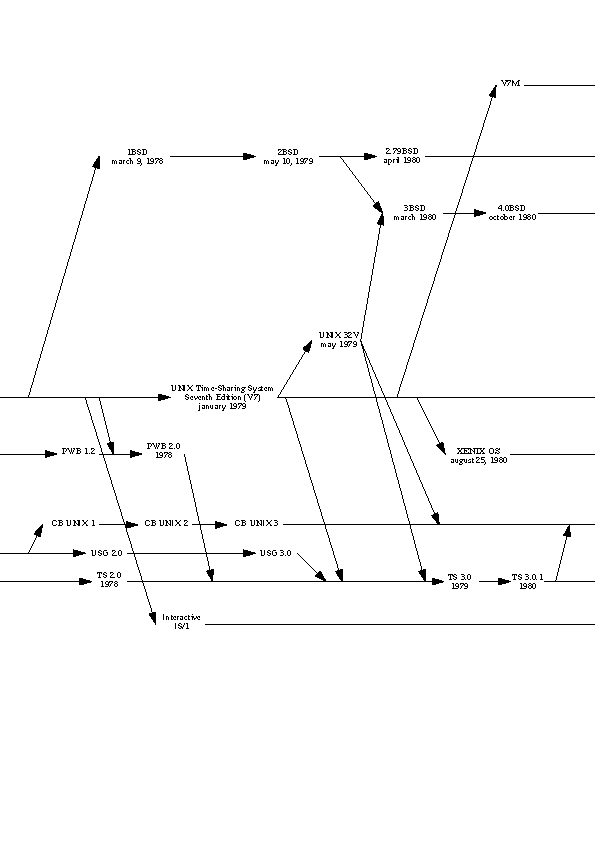 |
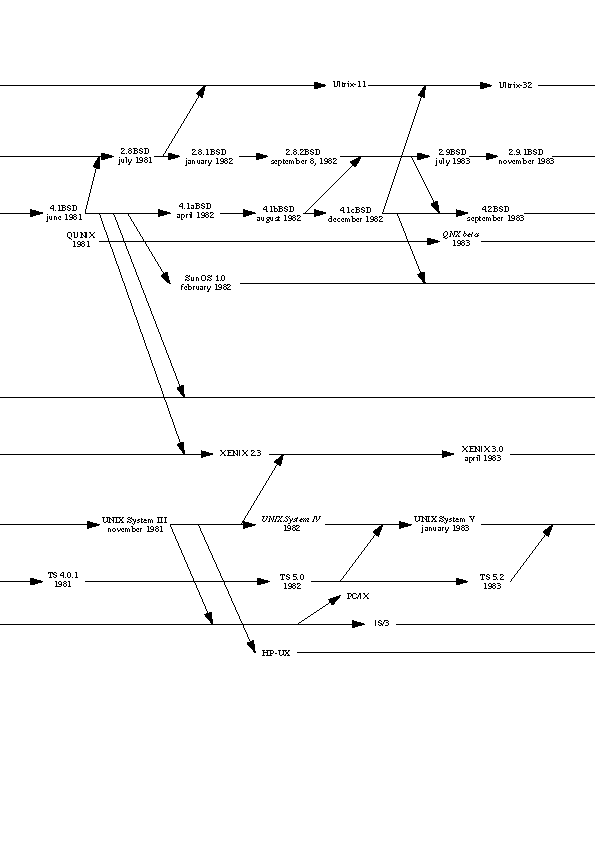 |
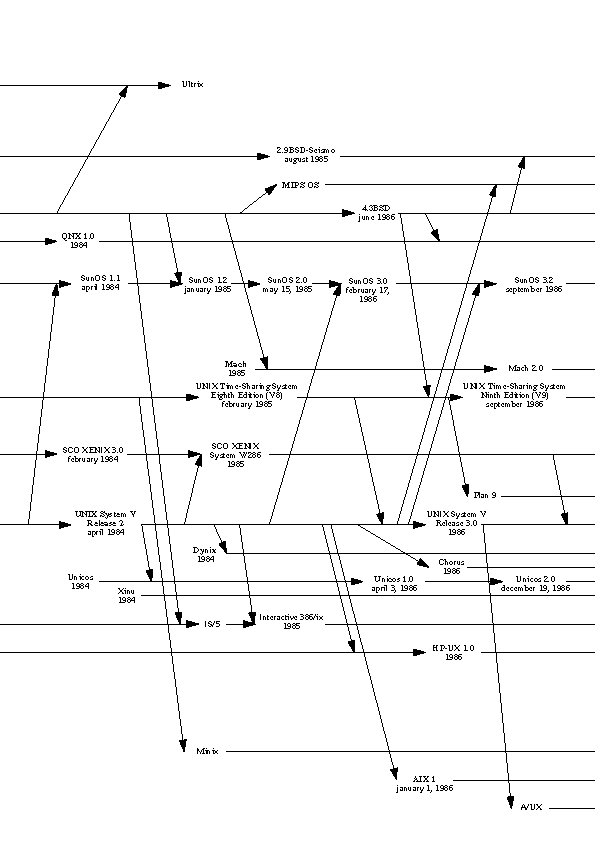 |
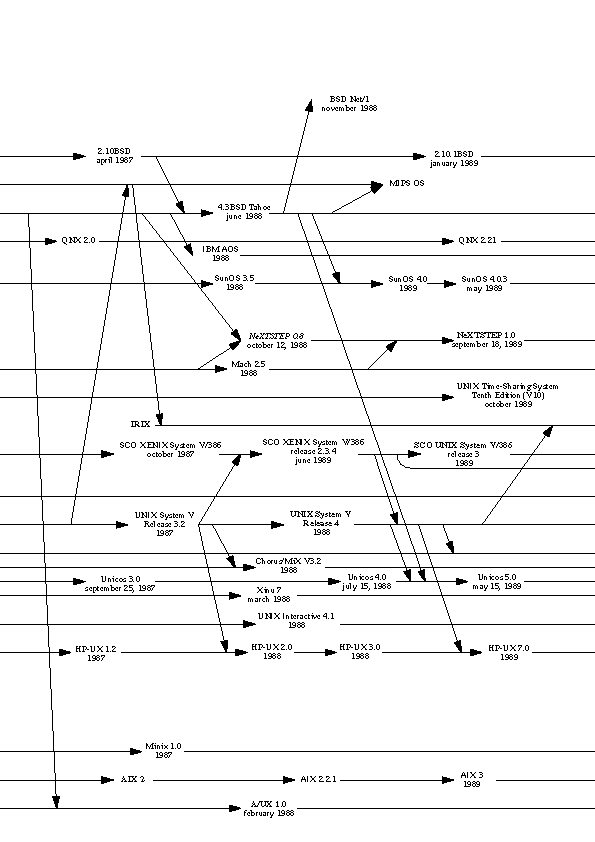 |
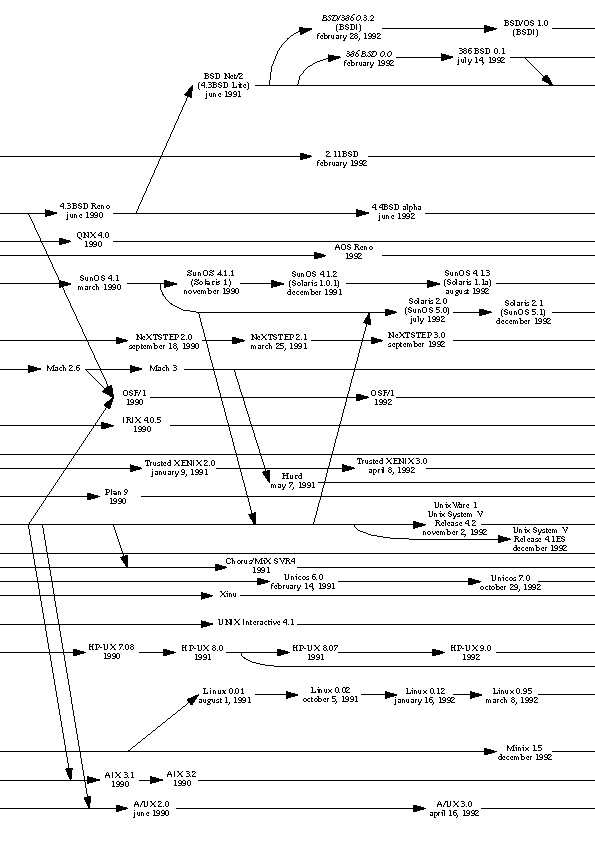 |
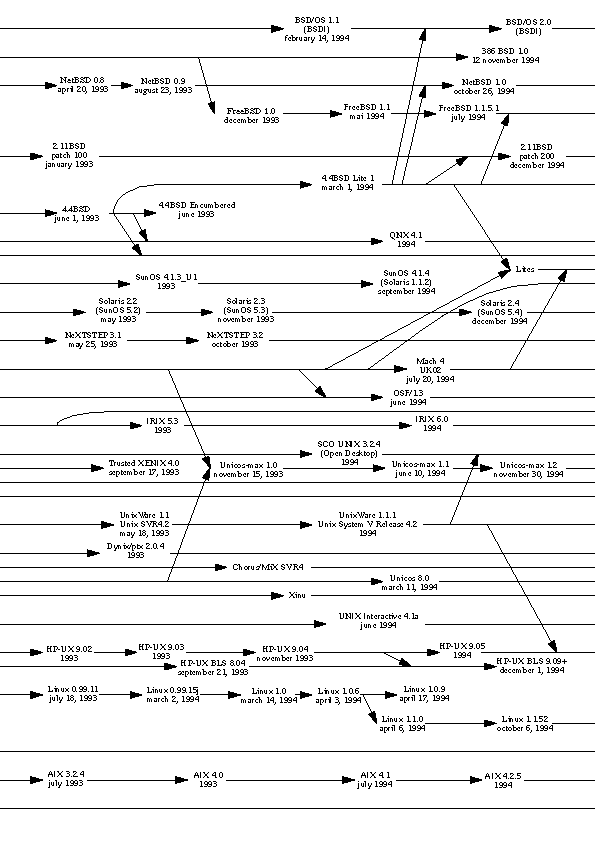 |
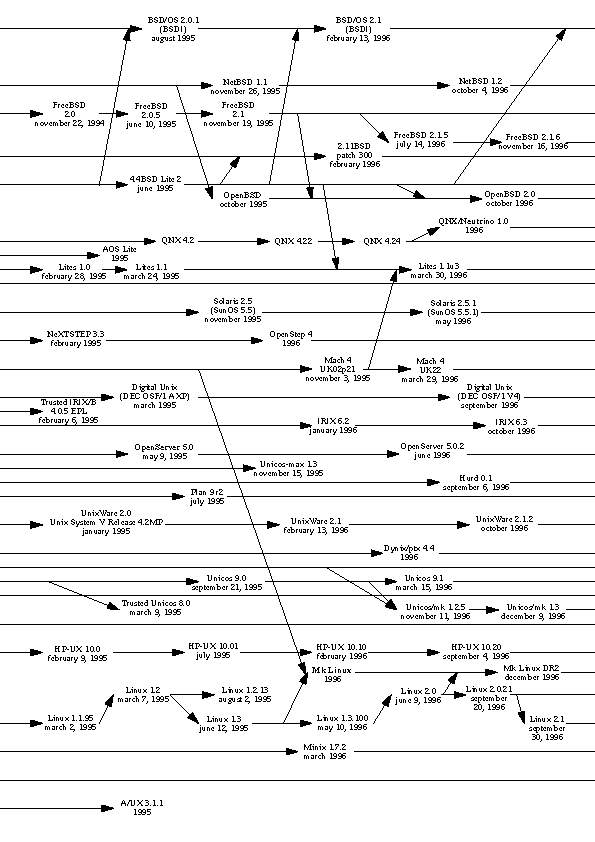 |
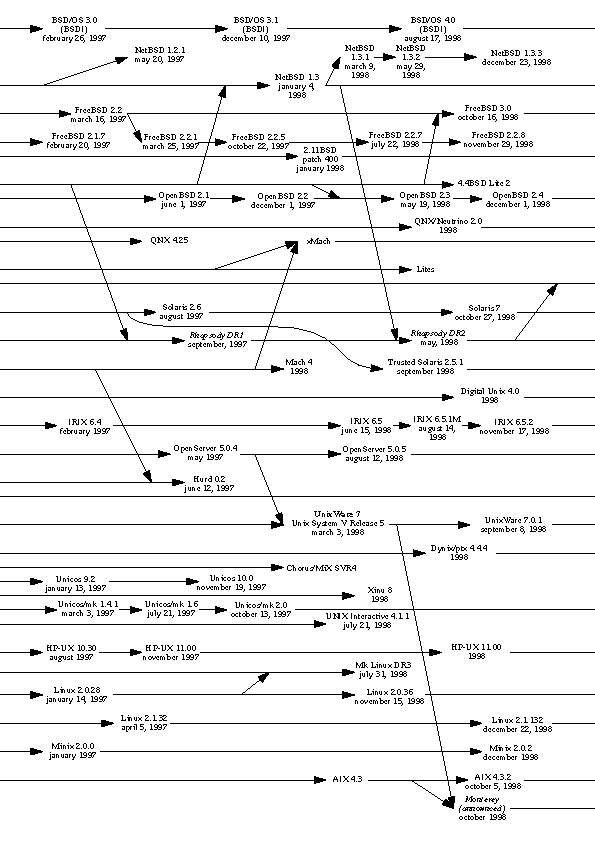 |
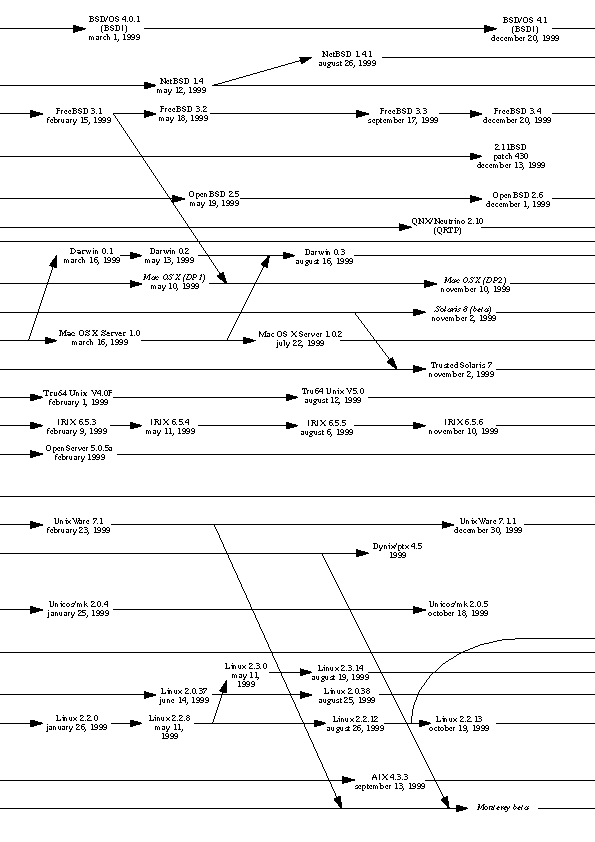 |
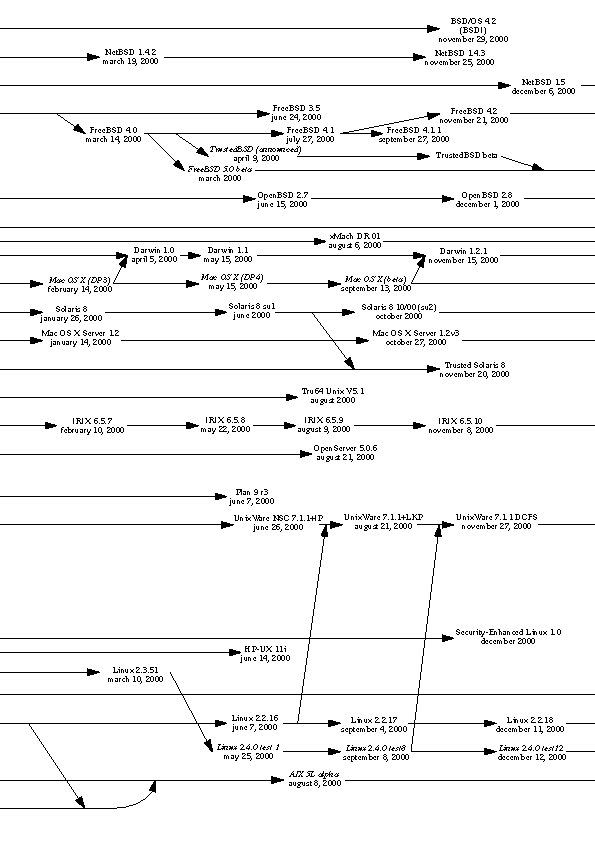 |
 |
| 1 |
2 |
3 |
4 |
5 |
6 |
7 |
8 |
9 |
10 |
11 |
12 |
13 |
| Click on a page to get a bigger image. |
This diagram is only a very simplify unix history. There are a lot more unix
like systems than those listed in this chart, maybe 10 times more ! Some years ago,
every electronic company has it's own unix system. For example, my company was selling
an unix, derivated from another one, and those two are not in this chart because
there are too small. So this diagram is only the upper part of an iceberg, with
a penguin on it ;-).
Some Home Pages :
Some useful links :
- The Creation of the UNIX Operating System [ http://www.bell-labs.com/history/unix/
] from Lucent.
- UNIX Past [ http://www.unix-systems.org/what_is_unix/history_timeline.html
] from The Open Group.
- The Unix Heritage Society [ http://minnie.tuhs.org/TUHS/ ] by Warren Toomey.

- FreeBSD Release Information [ http://www.freebsd.org/releases/index.html
] from FreeBSD.
- The UNIX system family tree: Research and BSD [ ftp://ftp.freebsd.org/pub/FreeBSD/FreeBSD-current/src/share/misc/bsd-family-tree
] by Wolfram Schneider.
- BSD History Chart [ http://www.de.freebsd.org/de/ftp/unix-stammbaum ] from
FreeBSD.
- Formal NetBSD Releases [ http://www.netbsd.org/Releases/formal.html ] from
NetBSD.
- Sun History [ http://www.sun.com/corporateoverview/who/history.html ] from
SUN.
- HP History [ http://www.software.hp.com/HPUX-RDMP/history/slide1.htm ] from
HP.
- The SGI IRIX 6.5/MIPS Roadmap [ http://www.sgi.com/developers/feature/2000/irix_mips.html
] from SGI.
- Unix and Multics [ http://www.staff.city.ac.uk/~sh392/multics/unix.html
] by Tom Van Vleck.
- Unix Start [ http://virtual.park.uga.edu/hc/unixhistory.html ] from the
University of Georgia.
- Linux Kernel Archives [ http://www.kernel.org/ ] and Linux HeadQuarters
[ http://www.linuxhq.com/ ].
- 20 Years of Berkeley Unix [ http://www.oreilly.com/catalog/opensources/book/kirkmck.html
] by Marshall Kirk McKusick.
- Operating System Technical Comparison [ http://www.osdata.com/ ] from Milo.
- Chronology of Events in the History of Microcomputers [ http://www.islandnet.com/~kpolsson/comphist/
] by Ken Polsson.
- Histoire de l'informatique : Unix [ http://histoire.info.free.fr/unix.html
] (in french) by Serge Rossi.
My other links :
- Computer Languages History [ http://perso.wanadoo.fr/levenez/lang/ ].
- Unix Hierarchy [ http://perso.wanadoo.fr/levenez/unix/guru.html ] (an old
paper).
- NeXT History [ http://perso.wanadoo.fr/levenez/NeXTSTEP/ ] (in french).
- Windows History [ http://perso.wanadoo.fr/levenez/windows/ ].
* You may be wondering "Why does Steve
Jobs appear in this unix history?". Simply because he has made the best unix
computer ever : a NeXTcube powered with NeXTSTEP operating system. And now : Mac
OS X [ http://www.apple.com/macosx/ ].
Last update : august 11, 2001
Copyright 2001 http://perso.wanadoo.fr/levenez/unix/
![]() file, and if you have some
problem with it, look here [ http://perso.wanadoo.fr/levenez/eps2ps.html ].
file, and if you have some
problem with it, look here [ http://perso.wanadoo.fr/levenez/eps2ps.html ]. 
















